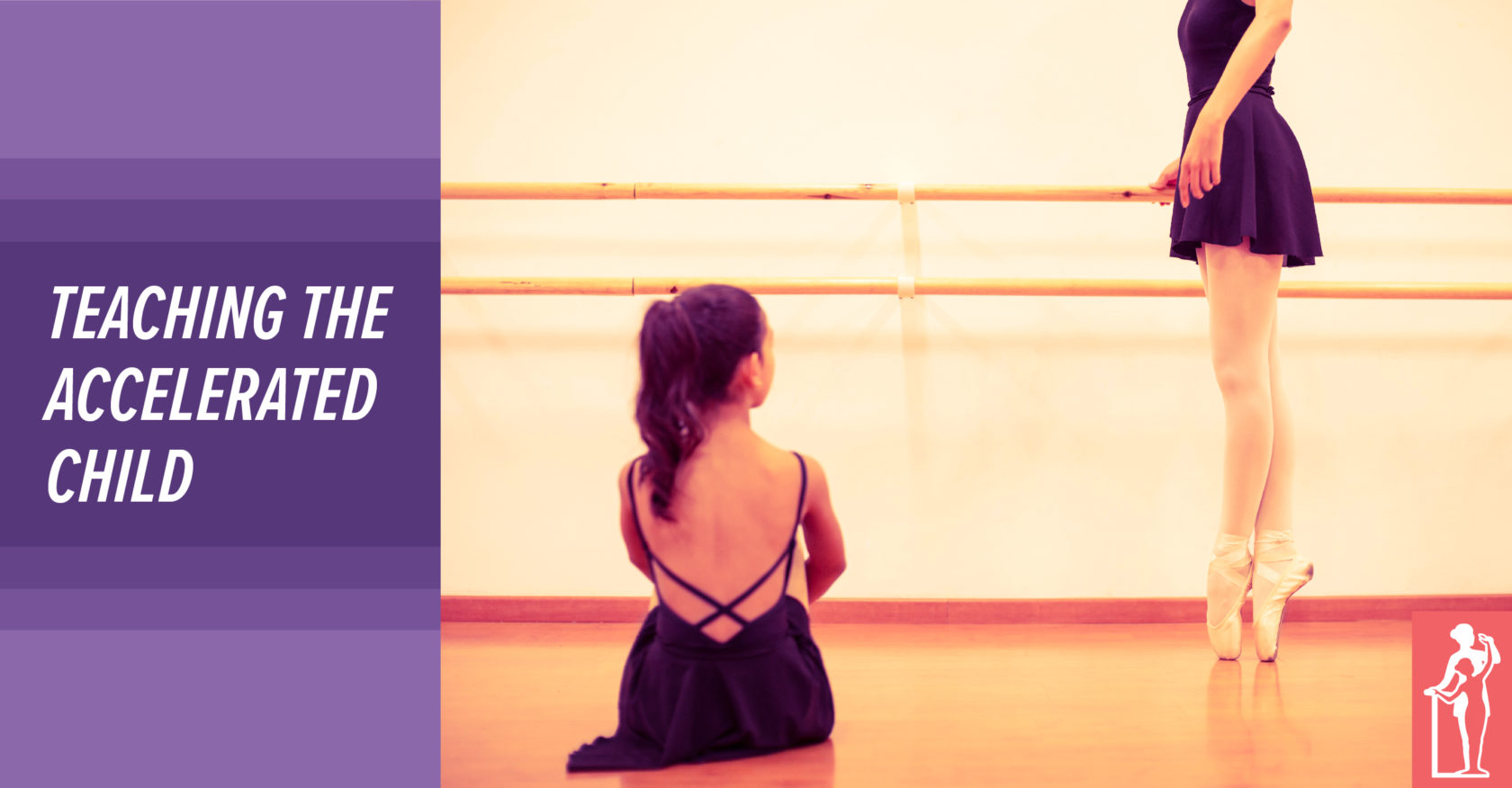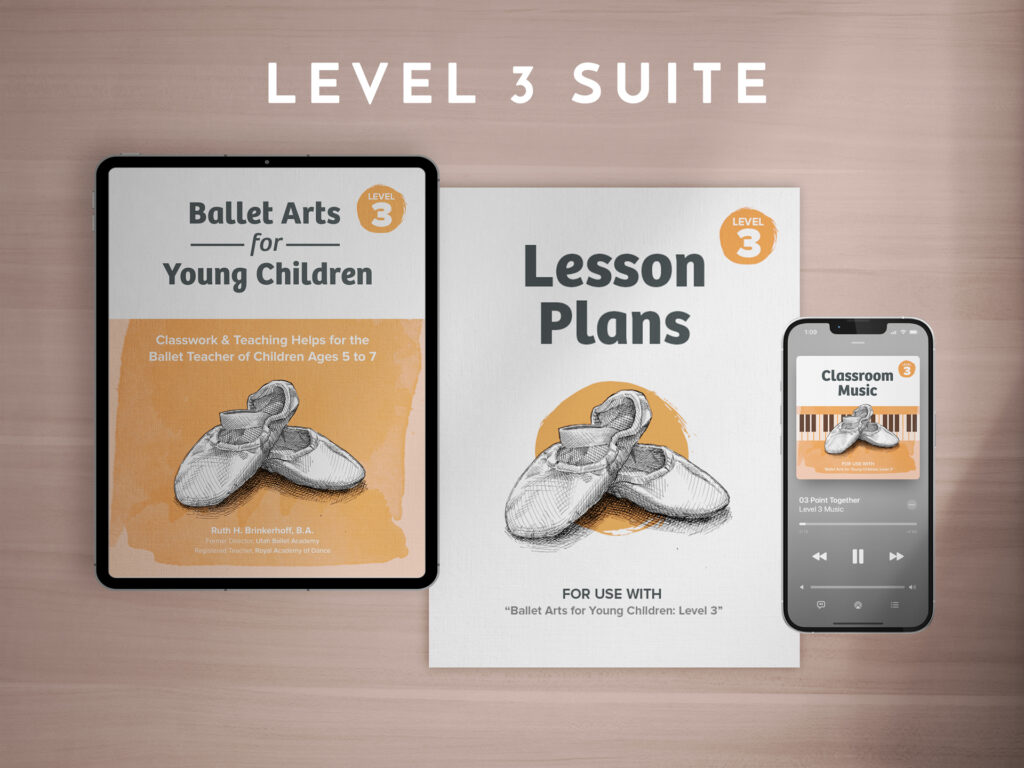How can we, as dance teachers, best serve those young students in our classrooms who we notice have some great potential to be more in the ballet world? Sometimes we see that they are progressing well, but we don’t know how to push them forward in a safe and constructive way. Today we draw from an article Ruth Brinkerhoff wrote in 1999 called “How do I challenge the extremely talented child who seems to go so much faster than the class?”.
Challenge Their Minds
Challenge the talented child intellectually, socially and artistically, but not physically during the pre-ballet years. For an individual challenge, give them extra homework assignments: longer and more difficult enchainements to figure out, musical pieces to choreograph to at home and show you after class, little story dances for practicing dramatic expression, etc. Refer them to books to read (or be read to from) about famous dancers.
Talented Turnout
Some children may appear to be able to do more turnout, and to do it correctly, than the recommended maximums. However, even the most talented child still needs to grow and build their muscles and joints with correct natural alignment. They, too, need to gradually prepare their bodies for the demands of technical ballet, and not do too much too soon. (See “Why the Rush?“)
Too much turnout, either in degree or in time spent using it in class will result in weaker joints, weaker muscles, and greater likelihood of dance injury in future years.
What is best for the child’s normal growth, for normal everyday activities is also what is best for the future ballet dancer. The teacher needs to work with the natural development patterns in children, not against them. The best ballet is a refinement of natural movement, not a distortion of it.
Challenge Them To Maintain Their Skills
Do require them to do their classwork well, even if they claim “they know it already.”
Example:
Child: I already know how to do that.
Teacher: Good! But I need to see that you still have it right. If you slop through it, I and others watching will think you can’t do it; that it’s too hard for you. You must show us your perfect work every time.
Child: But it’s boring!
Teacher: If you do it poorly, YOU are boring to your audience! A dancer must not bore her teacher if she wants harder work.
Be Tougher On The Details
There are certain details you may usually overlook with the average child, as a part of learning, and as a part of what they cannot fully accomplish just yet. Not with the super good kid. Be extra tough on the extra talented. They need it. Check the exact way they point their feet often. Insist on them using their best performances every time, every class.
Professionals rehearse what they already know, hundreds of times in preparation for a performance. The talented child must learn to repeat and perfect and improve and give attention to details, and repeat again what they already know if they are to become a successful dancer.
Provide Some Social Opportunities In Class
Talented children are often lacking in the social skills involved in working with other dancers: teamwork, cooperation, the perfecting of the group effort, and contributing harmoniously to the entire performance of the group, class, or dance school. Group choreographic settings arranged by the teacher will provide some of this.
They must learn to not “lord it over” the less able members of their team, which are their classmates. They need to learn courtesy, and patience, and respect for other people in all settings.
Being in a little performing company can keep the talented one feeling like they are already “a dancer,” and that what they learn is being put to use. Give them an occasional private lesson; teach them more about why they must learn patience with their bodies—more about what is correct and what is not for their muscles to do in ballet.
You can feel free to be especially “fussy” with their posture, and with arm positions, head positions, and expression, and with exactly how they hold their hands.
Other Dance Lessons
Add classes in other dance styles to their schedule, especially folk dancing, creative and modern. Folk dances are the grandparents of ballet. All professionals need to be familiar with the various national dance styles included in the many famous classical ballets. Learning folk dance styles and skills will contribute to the ballet dancer’s future career. Adeptness with creative and modern styles are also needed by today’s ballet dancers, to enable them to handle the non-classical choreographic styles of today.
These subjects can be added one at a time as the child seems ready for an increase in study. These supplementary items can help to keep the talented child challenged without progressing too fast into unsafe ballet technique.
Private Instruction
The talented child may benefit from an occasional private lesson, so they can go a bit faster into ballet. Use the private lesson as a reward for doing what you ask in class, and doing to their best ability. Every six weeks or so, providing the child has been working cooperatively and well in class, draw them aside and say something like, “Tell your Mom I think you are ready for (or have earned) a private lesson. Have her call me so we can set up a time.” Private lessons every week or on a more regular basis will not be beneficial for the young child, and may cause them to not work well in their regular class.
Care should be taken to base this faster progress on a good foundation of natural skills. Don’t skip any of the physical stages of skill development, even when pushing a talented child for an early career. Also try to help them to acquire good social skills. They will need these if they are to succeed in any career.
Find Out What The Parents Want
It also helps to ask the parents what they expect their child to get out of the dance lessons. What are they expecting the child to get in terms of benefit? Most are not looking for a future career for the child, but just for the other benefits a dance experience can give. Their intent for their child should tell you how to best direct and influence the child’s progress in dance.
If the parents wish to have the child become a dancer, you will need to explain about why to not move ahead too quickly physically. You need to provide evidence to the parents that their child is not being “held back.” Point out the things the child is learning, and can do. If the parents wish to push for an early career, and sidestep the recommended safeguards, the teacher will need to consider whether he or she wants to go along with this, and to what degree.
Talent is a challenge to handle, to direct, to stay on top of. Best of luck, because if you can successfully direct the talented child and his or her parents, the rewards are great, for both you and the future dancer.
Related Articles:


Comments
No comments for this post.
Add Comment